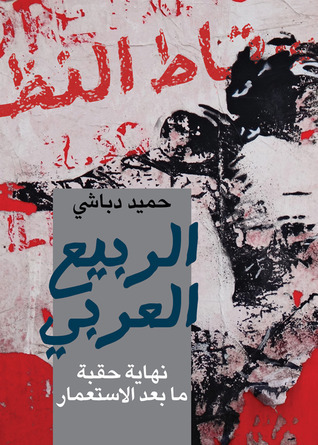What do you think?
Rate this book


327 pages, Paperback
First published April 1, 2012
[T]he major argument of this book is that events in the Arab and Muslim world generically referred to as the ‘Arab Spring [p 75]’ represent the end of postcolonial ideological formations as we have known them for the past two hundred years. By the end of postcoloniality, I mean the cessation of ideological production in colonial contexts and terms -- the terms determined by the European colonial domination of the region, and the tyrannical ‘postcolonial’ states left behind when the Europeans collected their flags and left. Anticolonial nationalism, socialism, and Islamism are the ideological formations that historically have confronted European colonialism and shaped the modern nation-states ... [p. 139]
The end of postcolonial ideological formations does not mean that colonialism itself has ended or that imperialism does not generate resistance but that the world is no longer trapped in old ways of thinking, trapped in opposition, but free to struggle with itself, move forward into new pathways. [p 140]
The task of becoming attentive students of the uprisings and seeing to it that they generate their own knowledge are tasks no less urgent than the revolutions themselves. To be sure, we are fortunately no longer in the age of grand-narrative-based universalist philosophies and sweeping theorizations. Whereas the Left Kantians’ longing for ‘total revolution’ following the French Revolution ended up producing ‘prophets of extremity’ in Nietszche, Heidegger, Foucault and Derrida, I have opted for the idea of open-ended revolutions, work-in-progress, an opera aperta, as a working idea to keep the tenacity of these revolutions alive theoretically.
In terms of the search for a new mode of compatible knowledge, the left is part of the problem, not the solution. The Arab and non-Arab left must shape up and join the revolutions, and cease being an obstacle to them. [241]
In order to reach for the current world, the world we live in, the world in which people revolt, the world in which Meydan Azadi and Tahrir Square have become emblematic of something else, something beyond ‘Western liberal democracy,’ something yet to be named, needs to be imagined. In this world, I suggest, demography, labour migration, gender apartheid, and environmental catastrophe are the key operative factors. In this world, Islam will not disappear, it will be sublimated into a new cosmopolitan worldliness. [p. 118]
...the commencement of the Arab Spring is the inaugural moment of not just a new historical but, more importantly, a new emancipatory geographical imagination... [55]
A geography of liberation begins with people’s struggles for bread and dignity and builds from there the moral map of their worldly whereabouts to wrap around a fragile planet. On this map there is no East or West, South or North, invested with ideological racialization, one against the other.[57]
What the naked military apparatus of these illegitimate states faced was the expanded public space that was now fully conscious of itself...That amounts to the people, hitherto the subjects of a (‘postcolonial’) tyranny, becoming, ipso facto, the citizens of the republic they wish to populate and thus expand into the public space they must thus define and designate. [204]
The regime du savoir associated with that politics is being altered, by way of altering the worlds we inhabit, and not merely by way of resistance to power. The transversalism of these revolutionary uprisings, as a result, generates its own synergy by systematically and consistently expanding the public space they implicate for the exercise of civil liberties.
Thus the middle class and blogging are offered as the explanations for a transnational uprising that was catalysed by a fruit peddler who set himself on fire out of economic desperation. [222-223]